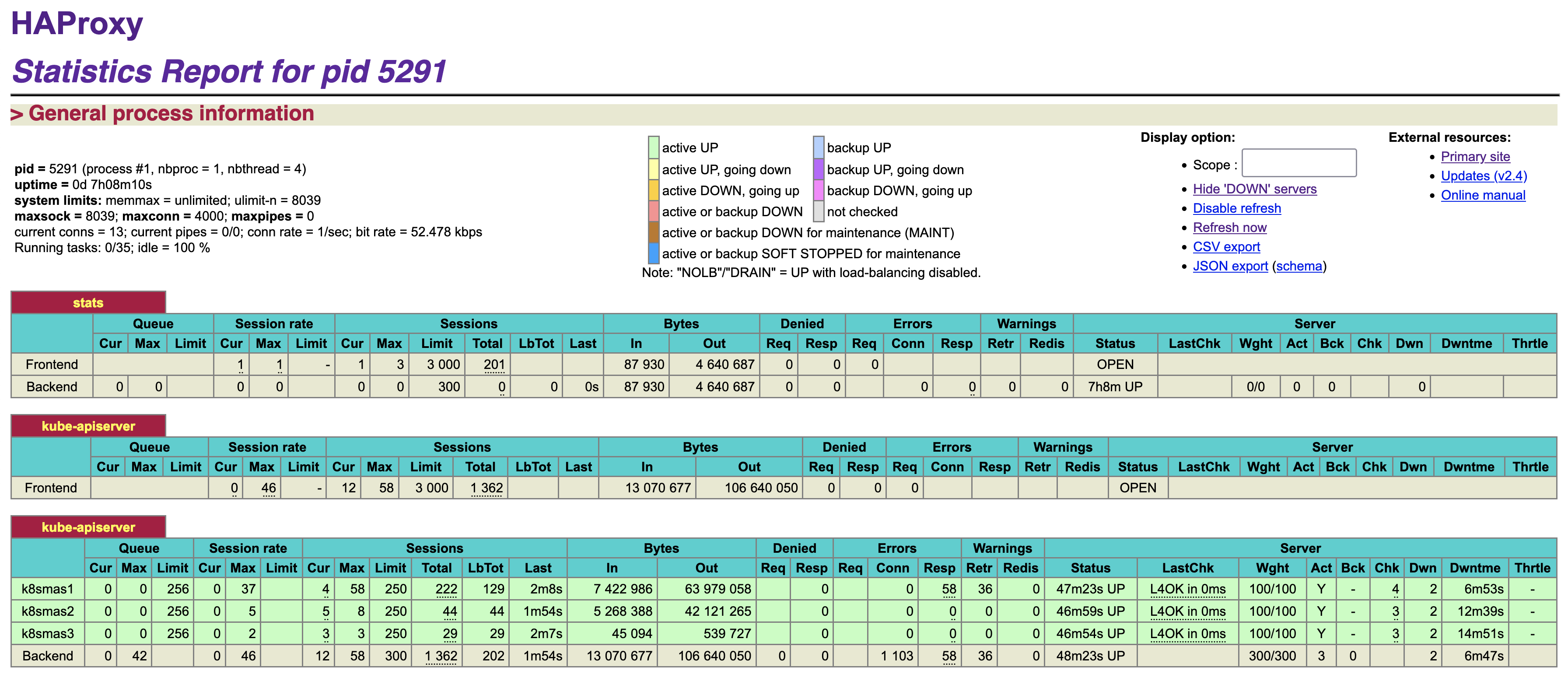Table of Contents
Introduction
Setting up HAProxy for Kubernetes high availability involves configuring HAProxy as a load balancer to distribute incoming traffic across multiple Kubernetes control plane nodes. HAProxy ensures redundancy and fault tolerance by directing requests to healthy nodes, thereby enhancing the availability and reliability of the Kubernetes cluster. This setup optimizes resource utilization and ensures continuous operation even if individual nodes experience failures, thereby supporting seamless scaling and robust performance for containerized applications.
If you are looking to set up a Kubernetes Cluster on your favourite distro, refer below internal URLs
- Creating Highly Available Clusters with kubeadm on Rocky Linux 9.4
- Install Kubernetes Cluster on Ubuntu 22.04 LTS using kubeadm
- Install Kubernetes Cluster with Ansible on Ubuntu in 5 minutes
- How to Install a Kubernetes on CentOS 7
- Upgrade Kubernetes Cluster with zero downtime in 5 easy steps
- Create a Rolling Update Kubernetes Deployment in 3 ways
Setting up HAProxy
Set the hostname
# hostnamectl set-hostname haproxy.linuxsysadmins.lanInstall the package to configure the HAProxy
# dnf install haproxy -yMake sure to backup the original configuration prior to the changes.
# cp /etc/haproxy/haproxy.cfg /etc/haproxy/haproxy.cfg-originalWe have defined status to check the traffic, frontend and backend for the Kubernetes HA setup.
#--------------------------------------------------------------------- # Global settings #--------------------------------------------------------------------- global log 127.0.0.1 local2 chroot /var/lib/haproxy pidfile /var/run/haproxy.pid maxconn 4000 user haproxy group haproxy daemon # turn on stats unix socket stats socket /var/lib/haproxy/stats # utilize system-wide crypto-policies ssl-default-bind-ciphers PROFILE=SYSTEM ssl-default-server-ciphers PROFILE=SYSTEM #--------------------------------------------------------------------- # common defaults that all the 'listen' and 'backend' sections will # use if not designated in their block #--------------------------------------------------------------------- defaults mode http log global option dontlognull option http-server-close option redispatch retries 3 timeout http-request 10s timeout queue 1m timeout connect 5000 timeout client 50000 timeout server 50000 timeout http-keep-alive 10s timeout check 10s maxconn 3000 # status listen stats bind *:9000 mode http stats enable stats hide-version stats uri /stats stats refresh 30s stats realm Haproxy\ Statistics stats auth admin:haproxypassword #--------------------------------------------------------------------- # main frontend which proxys to the backends #--------------------------------------------------------------------- frontend kube-apiserver bind *:6443 mode tcp tcp-request inspect-delay 5s tcp-request content accept if { req.ssl_hello_type 1 } default_backend kube-apiserver #--------------------------------------------------------------------- # round robin balancing between the various backends #--------------------------------------------------------------------- backend kube-apiserver mode tcp option tcp-check balance roundrobin default-server inter 10s downinter 5s rise 2 fall 2 slowstart 60s maxconn 250 maxqueue 256 weight 100 server k8smas1 192.168.0.21:6443 check server k8smas2 192.168.0.22:6443 check server k8smas3 192.168.0.23:6443 check #---------------------------------------------------------------------Check for the Syntax error.
# haproxy -c -V -f /etc/haproxy/haproxy.cfgStart and enable the HAProxy service
# systemctl start haproxy.service # systemctl enable haproxy.serviceIncase, if the service failed to start check for the logs and remediate.
# journalctl -xeu haproxy.serviceFirewall Requirement
Allow the traffic out of the box.
# firewall-cmd --add-port={9000,6443}/tcp --permanent # firewall-cmd --reload # firewall-cmd --list-allService Validation
To confirm the status of HAProxy page and Kubernetes API port, do a query as follow.
# ss -tunlp | grep "9000\|6443"The status can be viewed from any web browser by navigating to HAProxy IP.

That’s it, we have completed with setting up a HAProxy Load Balancer for Kubernetes HA setup.